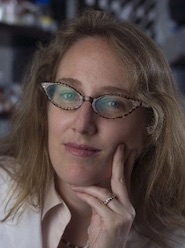| Center |
|
| Award Year | 2022 |
| Pilot Study | Treatment of diabetic foot ulcers via Live yeast secreting wound-healing factors |
| Awardee | Virginia Cornish PhD |
| Abstract |
The objective of this study is to develop and assess engineered live yeast secreting wound-healing protein factors as a new topical treatment modality for Diabetic Foot Ulcers (DFUs) and other topical wounds. Diabetic foot ulcers (DFUs)—one of the most severe and common diabetic complications—are a significant financial burden for patients and the healthcare system and a major cause of patient discomfort and surgical amputations. There is an ongoing need for more effective treatments for the DFUs. The technology we present here will be more effective—while cheap and affordable—for the treatment of DFUs and other chronic wounds. We hypothesize that (i) the generally recognized as safe (GRAS) yeast strains can be engineered to secrete wound-healing protein factors in a bioactive form and high enough titers needed for therapeutic applications. (ii) the live engineered yeast can be formulated for topical application on ulcers on the wound bed. (iii) the live engineered yeast will actively secrete and deliver wound-healing factors on the wound site. (iv) the continuous and prolonged secretion and delivery of the wound-healing factors by yeast on the wound site increases the bioavailability of bioactive factors, thus will facilitate the healing process. This project involves (i) optimizing the yeast secretory pathway for the secretion of pharmaceutical proteins in high titers. (ii) engineering optimized yeast for secretion of wound-healing factors of interest. (iii) assessing the secretion levels and the functionality and bioactivity of the secreted protein factors. (iv) formulating a minimalistic hydrogel dressing that contains the engineered live yeast as the active component. (v) assessing the physical/biological properties of the hydrogel formulation and performing optimizations if needed. And (vi) testing the wound healing properties of the engineered live yeast (hydrogel dressing) on an animal model (diabetic mice). |
